Authors
Stephen Noerper
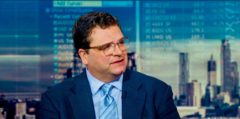
Stephen Noerper teaches Northeast Asia and Korean Peninsula relations at SIPA and in the department of political science at Columbia University. He is a Korea Society senior director for policy, senior research scholar at Columbia University’s Weatherhead East Asian Institute, and a senior advisor to the United Nations program in support of cooperation in Northeast Asia. Previously, he was a senior fellow and director at the EastWest Institute, an associate professor of international relations at New York University, and a visiting professor at American University, the National University of Mongolia, where he was a Fulbright senior scholar, and Waseda University. Dr. Noerper was an Intellibridge vice president, State Department senior analyst, and an associate professor at the Asia Pacific Center for Security Studies in Hawaii. He was an East-West Center fellow and Washington representative for the Nautilus Institute for Security and Sustainable Development. The author of more than seventy publications on US policy, Korea and Northeast Asia, he has appeared widely on radio and television, to include the BBC, Bloomberg, CBC, CNN, NPR and VOA and in The Wall Street Journal and other print. He holds advanced degrees from the Fletcher School of Law and Diplomacy and London School of Economics. He is a member of the National Committee on North Korea.
Articles by Stephen Noerper

US - Korea
September — December 2019Gaps Widen, Tensions Rise
US footing on the Korean Peninsula grew less firm as both Koreas resisted moves by Washington. The initial White House call for an increase in annual South Korean host-nation support (HNS) for US Forces in Korea to $5 billion was met with incredulity among the Republic of Korea’s officials and public. By yearend, there were media reports of a lowering of the US ask and agreement by Seoul to arms purchases, but the challenge of finalizing the Special Measures Agreement (SMA) and a residue of resentment remained. Seoul, too, was unhappy with Washington’s lack of progress with Pyongyang, a foil to President Moon Jae-in’s peace ambitions.
North Korea raised its stakes higher, rejecting diplomatic overtures by the United States and its “hostile policy,” disregarding curtailment of US-ROK military exercises, and testing 27 short range ballistic missiles, as well as multiple rocket launchers and engines, between May and the end of the year. December saw activity at the once-decommissioned Sohae Launch Facility. At year’s close, Kim Jong Un declared abandonment of North Korea’s long-range missile and nuclear testing moratorium, expectations of continued sanctions and renewed “self-reliance,” and the promise of a “new strategic weapon.”

US - Korea
May — August 2019Friction, Impasse, and Projectiles
Despite the renewal of limited US-ROK joint exercises on the Korean Peninsula, the United States and South Korea saw friction on other fronts. This includes the lack of progress in US-DPRK talks and by extension South Korea’s engagement with the North, renewed focus on host-nation support during the new US defense secretary’s visit, the suggestion that the US would place intermediate-range missiles in South Korea, Seoul’s decision to withdraw from a defense intelligence-sharing pact with Japan, and President Trump’s perceived lack of sensitivity toward South Korean interests. The ROK’s economic slowdown complicated its growing strategic frustration, and the flareup in South Korea’s relations with Japan left the US pondering its role as tensions worsened between its two Northeast Asia allies. North Korea condemned the US-ROK military exercises, tested multiple new short-range missiles, praised Trump while berating his subordinates, and stalled on working-level talks, despite Kim Jong Un’s commitment to Trump in Panmunjom, following Trump’s historic step across the military demarcation line.
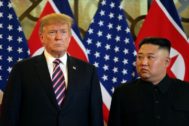
US - Korea
January — April 2019From Hanoi to Hiatus
Late February summitry gave way to stalemate, raising the specter of increased tension on the Korean Peninsula. President Donald Trump and North Korean Chairman Kim Jong Un signaled warmth around their Hanoi meeting – their second summit in a year – but Trump’s walkout hours short of the planned conclusion and the absence of an agreement left everyone struggling to define next steps. South Korea’s surprise at the lack of a deal gave way to efforts at facilitation with calls for inter-Korean economic engagement and President Moon Jae-in’s April visit to Washington. Trump and Moon urged patience and diplomacy and the US and ROK canceled spring military exercises, allowing space for North Korea negotiations. The DPRK still criticized the more limited exercises, announced an end-of-year deadline for the US to change its approach, snubbed South Korea on the first anniversary of the Panmunjom summit, and condemned US Secretary of State Mike Pompeo and National Security Advisor John Bolton. Meanwhile, the US and ROK reached an agreement on host nation financial support for US forces stationed in Korea, quieting discord in an otherwise sound alliance.
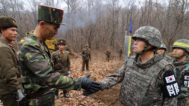
US - Korea
September — December 2018Patience, Tack and Impasse
Despite an impasse in the US-DPRK dialogue, the United States and Republic of Korea largely voiced common cause while tacking to new realities. The allies showed flexibility by continuing the drawdown in military exercises and destroying military posts along the demilitarized zone following the Moon-Kim summit in Pyongyang. The outgoing and incoming USFK commanders both acknowledged challenges to readiness, but spoke in support of inter-Korean efforts to reduce military tensions. Secretary of State Mike Pompeo bristled at inter-Korean accords made without US consultation, while President Moon Jae-in credited the alliance with facilitating the dramatic improvements in inter-Korean relations. Moon sought to spur a second Trump-Kim Jong Un summit, with both seemingly committed. Chairman Kim Jung Un and Pompeo met in October, yet North Korea turned away both Pompeo and the new US special representative for North Korea policy, Stephen Biegun, a month later over sanctions concerns and a block on US aid workers. The US and ROK tacked on an updated KORUS free trade agreement and the launch of a bilateral working group aimed at coordinating North Korea policy. Domestic political developments – Trump’s midterm loss of the House and Moon’s skeptics and economic concerns – will check momentum, though a second Trump-Kim summit might stimulate some activity in relations.

US - Korea
May — August 2018Singapore Sling to Stalemate
In contrast to last summer’s hot rhetoric and spiking tensions, the United States and North Korea moved to a June thaw with the dramatic Singapore summit. After some heavy lifting from South Korea, Donald Trump and Kim Jong Un produced a vague commitment to denuclearization. By summer’s end there was little progress as North Korea and the US appeared at odds on next steps, with North Korea insisting on a peace regime and the US insisting on visible steps toward denuclearization. South Korea has emerged as the mediator. The US finally saw a new ambassador in Seoul with the appointment of Harry Harris. USFK Commander Gen. Vincent Brooks agreed with ROK defense plans for reducing posts along the DMZ, while joint US-ROK military exercises remained on hold, although Defense Secretary James Mattis hinted at their resumption next year. President Moon’s poll numbers declined, as concerns over slow progress and fissures with the US grew.
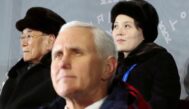
US - Korea
January — April 2018An Olympic Detente
Following weapon tests and rhetorical fury in 2017, North Korean leader Kim Jong Un signaled in his New Year address a marked turn toward improving inter-Korean relations. South Korean President Moon Jae-in seized the opening, lauded Trump’s hardline, stood up military hotlines, and moved North Korea to the Olympic moment. The PyeongChang Winter Olympics, Korea’s peace games, won early gold, despite US misgivings. Sport gave way to diplomacy, as North and South Korea agreed to a summit and Seoul sent its representatives north. President Trump surprised everyone by accepting Kim’s offer to meet. Washington and Seoul vowed to maintain maximum pressure and mute Trump trade concerns. Their de facto downgrade in the size of joint military exercises demonstrated flexibility. Seoul couched the Moon-Kim summit as a preliminary to the Kim-Trump sit down. Amid concerns of a split, Moon suggested Trump receive the Nobel Peace Prize.

US - Korea
September — December 2017Tensions, Tests, and Drift
North Korea’s sixth nuclear test on Sept. 3 and its Nov. 29 ICBM test launch were unfortunate bookends to increased tension between North Korea and the US in the closing months of 2017. The missile test, which Kim Jong Un hailed as “completing the state nuclear force,” potentially placed the entire US within range, leading Chairman of the Joint Chiefs of Staff Gen. Joseph Dunford to warn of the likelihood of conflict. Two new UN Security Council resolutions tightened economic sanctions against North Korea. There seemed little prospect for a resumption of negotiations, despite senior US officials urging diplomacy and a visit to Pyongyang by UN Under Secretary General for Policy Jeffrey Feltman. President Trump’s September UN address and subsequent tweets challenged the DPRK leader personally and directly, renewing a war of words. Trump’s November visit to the ROK struck a more restrained tone and saw a positive ROK response. The US conducted several military exercises with its allies. Meanwhile, Seoul-Washington fissures grew over Trump’s criticism of the KORUS free trade agreement and President Moon’s eagerness to engage the DPRK – a drift that may grow after Kim Jong Un’s New Year’s call for talks and possible DPRK participation in the Pyeongchang Winter Olympics.

US - Korea
May — August 2017Missiles Fire and Fury
Tensions rose to new levels on the Korean Peninsula as North Korea fired multiple missiles demonstrating markedly enhanced capabilities and crowned the Labor Day weekend with a sixth nuclear test with a significantly larger yield than previous tests. The United States tackled its most significant global security challenge by reinforcing its deterrent capabilities, tightening the financial noose on the North, President Trump tweeting stern warnings, and military and diplomatic leaders calling for dialogue. South Korea responded by reiterating its military readiness, expanding its own missile capabilities, and reeling from Trump’s rhetoric that likened President Moon Jae-in’s push for talks to “appeasement” and his threat to scrap the KORUS trade agreement. Despite joint military exercises, live fire drills, B-1 dispatches, and shared statements condemning Pyongyang to signal alliance strength, the relationship between the United States and South Korea appears frayed in dramatic new ways.
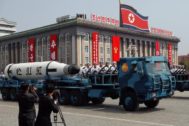
US - Korea
January — April 2017Peninsula Tensions Spike
North Korea tested President Trump’s new administration with a New Year promise of imminent ICBM capability and subsequent missile launches. Tensions rose to the highest level since 1993/1994 with missile launches, the assassination of Kim Jong Nam, and a possible ICBM on display at a military parade to celebrate the 85th anniversary of the DPRK’s Korean People’s Army. Washington offered Seoul assurances of support, sending Defense Secretary Mattis, Secretary of State Tillerson, and Vice President Pence in early 2017. Yet, Trump’s comments about sending an “armada” with the dispatch of the USS Carl Vinson carrier strike group led South Koreans to fear blowback if the US conducted a preemptive or preventive strike against DPRK facilities. South Korea saw deployment of the first stages of THAAD, but the missile defense system and broader policy differences with May 9 ROK presidential victor Moon Jae-in will be challenges for US-South Korea relations.

US - Korea
September — December 2016Unrest and Tests
North Korea opened the final months of 2016 with a bang by conducting its fifth nuclear test on Sept. 9. It followed up with a series of rocket and missile tests, culminating the year with Kim Jong Un’s claim of an imminent long-range ballistic missile capability. Yet, political transition in South Korea and the United States proved the hallmarks of late 2016, suggesting potential shifts in the approaches on the Peninsula, while underscoring the firm commitment of the US and ROK to their alliance. The Park-Choi scandal led to massive protests the final two months of the year and an impeachment vote on Dec. 9 by the National Assembly, confusing political observers about the implications for South Korean political stability. Donald Trump’s surprise victory in the US raised questions among Koreans about US reliability as an alliance partner.